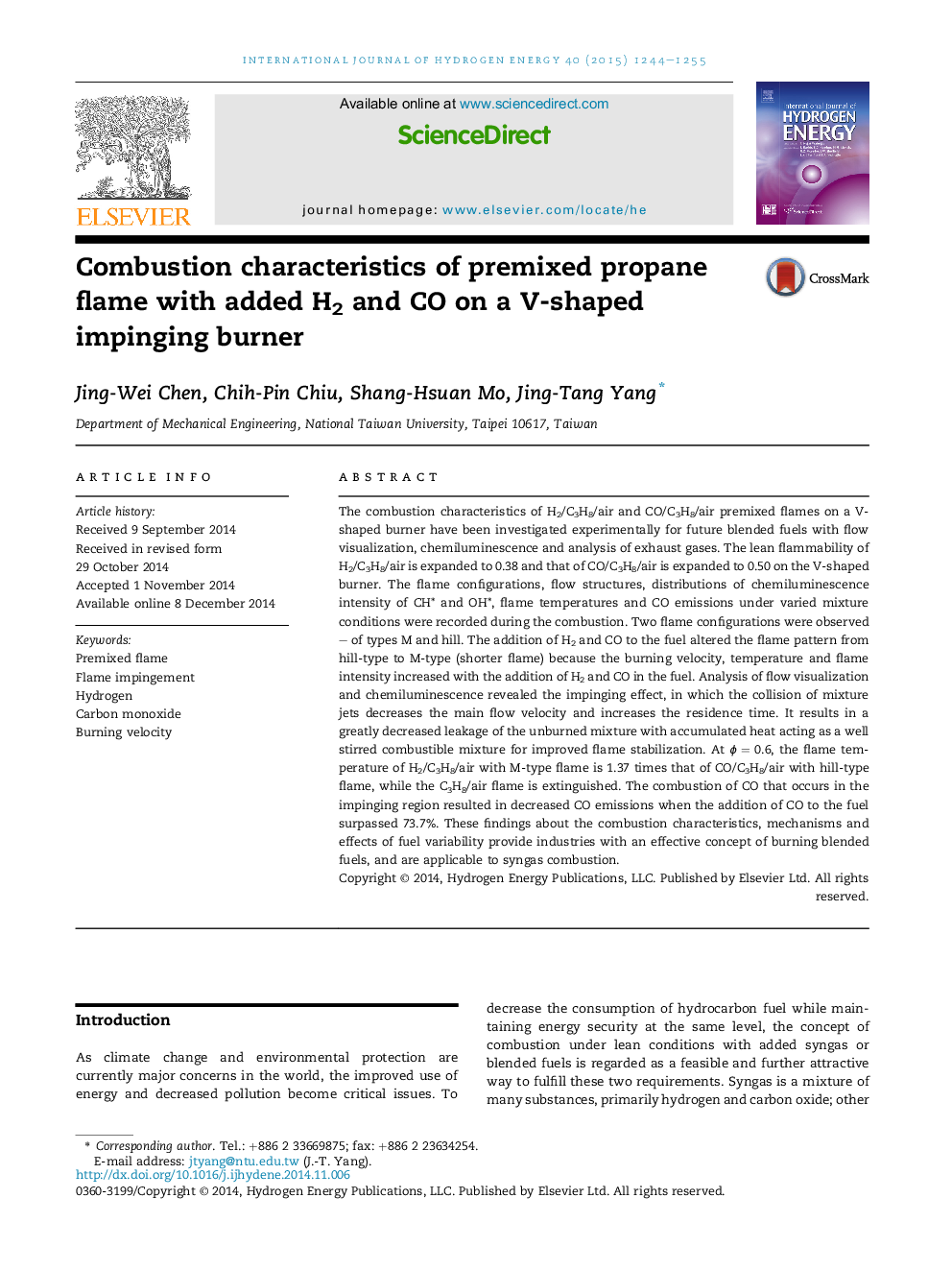| Article ID | Journal | Published Year | Pages | File Type |
|---|---|---|---|---|
| 1270219 | International Journal of Hydrogen Energy | 2015 | 12 Pages |
•The lean flammability of an H2/C3H8/air flame is expanded to 0.38.•The lean flammability of a CO/C3H8/air flame is expanded to 0.50.•The flame-flow mechanisms of the blended flames are revealed.•The H2/C3H8/air flame has highest temperature at fixed C3H8 flow rate.•The CO emission is greatly decreased for added CO surpassing 73.7%.
The combustion characteristics of H2/C3H8/air and CO/C3H8/air premixed flames on a V-shaped burner have been investigated experimentally for future blended fuels with flow visualization, chemiluminescence and analysis of exhaust gases. The lean flammability of H2/C3H8/air is expanded to 0.38 and that of CO/C3H8/air is expanded to 0.50 on the V-shaped burner. The flame configurations, flow structures, distributions of chemiluminescence intensity of CH* and OH*, flame temperatures and CO emissions under varied mixture conditions were recorded during the combustion. Two flame configurations were observed – of types M and hill. The addition of H2 and CO to the fuel altered the flame pattern from hill-type to M-type (shorter flame) because the burning velocity, temperature and flame intensity increased with the addition of H2 and CO in the fuel. Analysis of flow visualization and chemiluminescence revealed the impinging effect, in which the collision of mixture jets decreases the main flow velocity and increases the residence time. It results in a greatly decreased leakage of the unburned mixture with accumulated heat acting as a well stirred combustible mixture for improved flame stabilization. At ɸ = 0.6, the flame temperature of H2/C3H8/air with M-type flame is 1.37 times that of CO/C3H8/air with hill-type flame, while the C3H8/air flame is extinguished. The combustion of CO that occurs in the impinging region resulted in decreased CO emissions when the addition of CO to the fuel surpassed 73.7%. These findings about the combustion characteristics, mechanisms and effects of fuel variability provide industries with an effective concept of burning blended fuels, and are applicable to syngas combustion.
